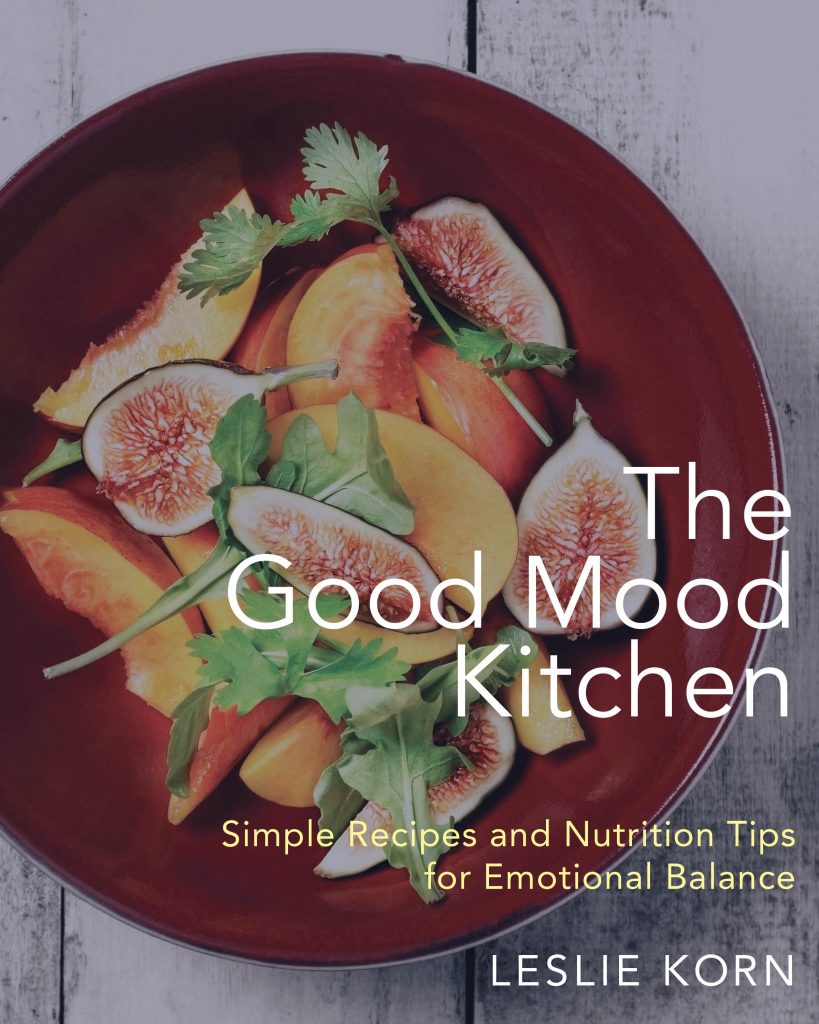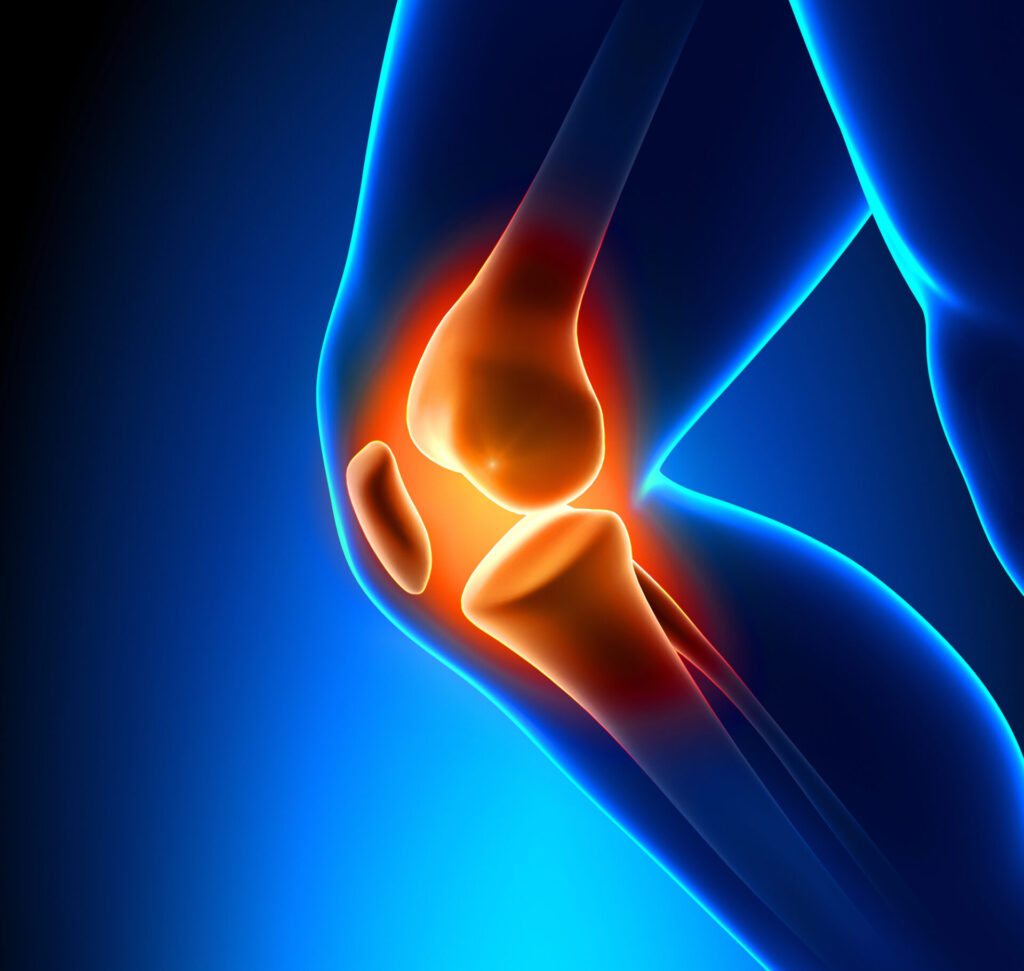In light of recent tragic events with fashion designer Kate Spade and celebrity chef Anthony Bourdain and a growing number of suicides in Western society, it’s important to remember that whole health wellness plays a crucial role in addressing mental health and mood disorders. One part of that care is nutrition. This interview with The Good Mood Kitchen author, Leslie Korn, PhD, explores the benefits of a biologically and culturally appropriate diet to address mood and mental health.
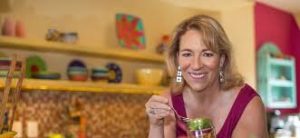 This interview with clinical traumatologist and behavioral-medicine therapist, Leslie Korn, PhD, explores the importance of personalized nutrition and helping patients transition to a diet that is ideally suited to their unique bio-individuality. Her most recent book, The Good Mood Kitchen, is a valuable patient guide for nutrition and emotional balance. At the end of this interview is a video of Dr Korn’s presentation at the 2017, Nutrition Therapy Association Conference. In this video she discusses the concept of “conscious self-medication with foods.”
This interview with clinical traumatologist and behavioral-medicine therapist, Leslie Korn, PhD, explores the importance of personalized nutrition and helping patients transition to a diet that is ideally suited to their unique bio-individuality. Her most recent book, The Good Mood Kitchen, is a valuable patient guide for nutrition and emotional balance. At the end of this interview is a video of Dr Korn’s presentation at the 2017, Nutrition Therapy Association Conference. In this video she discusses the concept of “conscious self-medication with foods.”
Q: Dr Korn, you began your work in the jungle of Mexico in 1973. What have you learned from that experience that applies to patients in America?
LK: I ran a free health center in the jungle of Mexico and I learned a great deal from indigenous healers. I saw people’s health changing from acute to chronic health problems. It moved from dysentery to diabetes almost overnight. When I began my work in Mexico, I saw that the indigenous community were transitioning out of eating healthy, whole indigenous foods to eating refined and processed foods not natural or endemic to the region. This discovery led me back to my scholarly roots in psychosociology. In trying to address the trauma in native populations, I realized that we were missing a significant piece in their treatment. No matter how much we talked, they were not getting adequate nor optimal nutrition to feed their mind and body’s, not to support their unique digestion patterns. Until we addressed getting them appropriate nutrition, we were only going to see 50% improvement.
After a number of years working in the jungle, I met Dr. Nicholas Gonzalez, who became a mentor. He taught me that we evolve in a time, place and an environment that suits our particular biology. For example, the nutritional needs of someone native to Alaska are going to differ from those of someone native to the tropics. At the time I met Dr. Gonzalez I had been working hard for many years and didn’t feel the pep I felt I should. He suggested I put meat and animal proteins back into my diet which I did, reluctantly. This is how I became a “recovered vegetarian.” In the course of 40 years, I have worked with a number of vegans and vegetarians who were seeking alternatives to conventional mental health treatments. They came to me in anxious or depressed states despite all the good foods they were eating. For these individuals incorporating animal protein back into their diets became the key. We found that a little animal protein helped bring a new level of nutritional support to their diet and improved their mental state. While we hear a lot about the perfect diets, and the war between Paleo and Vegan, the fact is there is no one right diet for everyone and applying that became central to my work in mental health nutrition.
Q: What changes did you make in their diets and what results did you witness?
LK: I look for creative and gentle ways to help people make dietary transitions. It’s important to remember that many people with depression and anxiety or insomnia, have experienced long-term trauma and thus have undiagnosed post-traumatic stress disorder (PTSD). I began with education on reading labels and improving digestion. I’ve never seen a person with mental distress that did not have digestive problems. Stress contributes to GERD, for example we see high rates of GERD in people with PTSD.
For patients in the United States, at the start, we might make small changes such as introducing beef collagen peptides in bone broth and apple cider vinegar. Then, I work toward removing the refined foods and focus on a healthy fats and proteins along with fresh raw a salad and sweet potatoes. I look at where I can get the biggest change first. For instance, if my clients don’t cook, then perhaps they can make smoothies, and add fish oil or gamma-linolenic acid. Then we progress to preparing a meal in a crockpot, which requires minimal effort and time. I begin to establish a model of personal change through self-care with nourishment, both emotional and nutritional, and then, I see a change in personality and improved moods.
A good example is my work with indigenous people in the Northwest United States. Traditionally Native peoples in the Pacific Northwest eat a local fish known as ooligan (smelt) and fish oil from salmon and clams, wild game, berries and root vegetables. But, development and social change over the last 100 years has brought nutrition trauma, which has delivered refined foods, processed foods and foods not natural to their bodies. We have seen that a return to ones culturally and biologically appropriate diet brings remarkable change.
This work is not just about nutrition, it’s about how we change and adhere to a health program. I let patients know that I believe in them, I am on board with you and I work with them build a network of support for success. When we focus on being creative to design a program with nutrition and implementation that is unique to the individual and to the community and culture, we then begin to see improved health and stabilized mood and energy.
Q: What are some of your practice protocols to share with fellow clinicians?
LK: There are number of simple things to do right at the start, such as asking what makes you feel your best? And your worst? What are the patients’ habits for self-care and what food do you traditionally eat? People love to talk about food. When we claim the wisdom of our ancestors, such as knowing what their grandmothers ate and what they know, we begin to put a food story together. It’s no longer about just foraging for food, it’s about learning from our history and applying that to our modern life. In my latest book, The Good Mood Kitchen, I use a lot of ingredients that came from the such as cactus, roselle, jicama, chilies and chocolate (see example recipes below).
Once these initial questions of responses to food is established, then we can do laboratory testing. One of the most important things we can do today is to get to the patient’s history through genomic testing. Genomics is our modern biochemical blueprint to identify how each person is different along with specific responses to food exercise, detoxification and pharmaceuticals
Learn More in this excerpt video from Dr. Leslie Korn
Nutrition Therapy Association Conference 2017
Editor’s Note: To learn more about how to use Dr. Korn’s methods in your own practice, her clinician’s guide, Nutritional and Integrative Interventions for Mental Health Disorders (DVD) is a valuable tool. https://drlesliekorn.com/shop/
Leslie Korn, Ph.D., MPH, has had a bilingual (English/Spanish) clinical practice since 1977 and providing over 50,000 hours of integrative 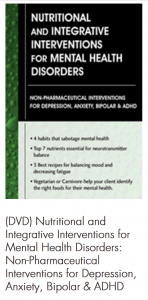 health care to people with a diverse range of health problems in both urban and rural settings. I am the author of 8 books; The Good Mood Kitchen (Norton, 2017) Nutritional Essentials for Mental Health, (Norton, 2015), Preventing and Treating Diabetes Naturally ,eBook (2018) , Cultural Competency Workbook, (Premiere Publishing , 2015) Rhythms of Recovery Trauma Nature and the Body (Routledge, 2013), and Preventing and Treating Diabetes Naturally, The Native Way, (DayKeeper Press, 2009) Her new book, due out next year is on Herbal Medicine for Women (Shambala)
health care to people with a diverse range of health problems in both urban and rural settings. I am the author of 8 books; The Good Mood Kitchen (Norton, 2017) Nutritional Essentials for Mental Health, (Norton, 2015), Preventing and Treating Diabetes Naturally ,eBook (2018) , Cultural Competency Workbook, (Premiere Publishing , 2015) Rhythms of Recovery Trauma Nature and the Body (Routledge, 2013), and Preventing and Treating Diabetes Naturally, The Native Way, (DayKeeper Press, 2009) Her new book, due out next year is on Herbal Medicine for Women (Shambala)
I consult to clinicians and advise clients who want to people to reduce or eliminate pharmaceutical use and in particular psychotropic medications. I work with people who want to integrate natural approaches to their health care and I have a specialty practice in mental health nutrition and body oriented psychotherapy. I also consult to community mental health, hospital-based programs and on tribal reservations supporting the integration of traditional healing and integrative medicine for mental and physical health.
I received my Ph.D. in Behavioral Medicine from the Union Institute, a MA degree in cross cultural health psychology from Lesley University, and a MPH from the Harvard School of Public Health. I was a clinical fellow in psychology and religion and appointed clinical supervisor in the department of psychiatry at Harvard Medical School. I completed clinical internships at the Pain and Stress Clinic, Lemuel Shattuck Hospital, and at the Trauma Clinic at the Massachusetts General Hospital. I introduced Polarity therapy and body oriented psychotherapy into the department of psychiatry during my work at Harvard.
I have served as a clinical instructor at Harvard Medical School, clinical director of the New England School of Acupuncture, Associate Professor at the California Institute of Integral Studies and on the Mind/Body Medicine faculty of the National College of Naturopathic Medicine. I was in private practice in Cambridge, MA for 15 years, when I also taught in the Mental health licensure program at Lesley University. During those years I also directed a consulting firm funded by state and federal agencies to provide multi-lingual elder wellness and teen arts and esteem programs to low income housing residents.
I have conducted and published peer-reviewed research funded by the National Institutes of Health and in 2009-2010 I was a Fulbright Scholar in Mexico. I am a member of the International Network of Integrative Mental Health, a core faculty at Capella University, a nationally approved clinical supervisor (ACS) and I serve as research director at the Center for World Indigenous Studies where I also direct the Center for Traditional Medicine.
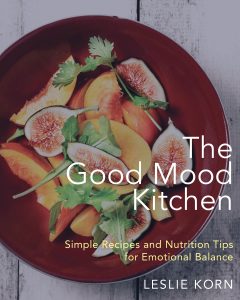 Recipes to share with patients, courtesy of The Good Mood Kitchen, by Leslie Korn, PhD
Recipes to share with patients, courtesy of The Good Mood Kitchen, by Leslie Korn, PhD
Focus Smoothie
Dr. Korn says this recipe is perfect for children, teens and adults who don’t want to swallow a bunch of capsules. Add a soft boiled, cooled egg to the smoothie for choline, which helps with focus and memory.
Ingredients
1 cup almond milk or hemp milk
2 Tbsp. raw almond butter
½ tsp hemp oil
1 frozen banana
1-2 Tbsp. raw organic cacao powder (no sugar)
Free amino acids (powder) containing tryptophan or 5-HTP
Probiotic powder
Optional:
Vitamin and mineral complex powder (copper/iron free)
5-10 drops stevia
Directions
- Place ingredients in a blender in the order listed, blending as you add. Makes 12 servings.
Brain Bolt Dressing
In her book, Dr. Korn has an inspiring section called Salad Jar Meditation where she suggests changing the mind set around time consuming salad making. She suggests that patients engage with their family in making salads in mason jars that can be kept in the refrigerator. Layer the ingredients jar, with the salad dressing in the bottom. When you are ready to eat give it a shake and it’s ready to go. Here is the brain friendly dressing recipe.
Ingredients
¾ cup extra-virgin olive oil
¼ organic hemp oil
10 Tbsp. balsamic vinegar
8 Tbsp. raw apple cider vinegar
2 Tbsp. dark agave, pure maple syrup or raw honey
1 tsp. salt
2-3 cloves minced garlic, finely chopped
Freshly ground black pepper to taste
Directions
- Whisk all the ingredients together and store in a glass jar. Will keep for one week. Optional add ins: 4 tsp Dijon mustard, 2 tsp. curry powder.
Nopales and Eggs
The prickly pear cactus, also known as nopal cactus, are traditionally called nopales. This inexpensive ingredient is ideal of mental health, lowering blood sugar and soothing digestion. You can find them in the produce section of Mexican and ethnic grocers. Makes 4 servings
Ingredients
4 paddles of nopal cactus
3 cloves garlic, minced
I large onion, chopped
1/3 cup olive oil
¼ tsp baking soda
5 large eggs
I pinch pepper, to taste
1 pinch sea salt, to taste
Directions
Carefully remove the spines from each nopal paddle and julienne into 1/16 slices.
- Place garlic, onions and olive oil in 10-inch fry pan. Cook over medium heat until onions are transluscent.
- Add the nopal to the onion-garlic mixture, then the baking soda, and stir mixture frequently.
- Whip eggs in a separate bowl.
- When the nopal turns lighter green, stir in the whipped eggs. Add pepper and salt. When eggs are set, serve.

